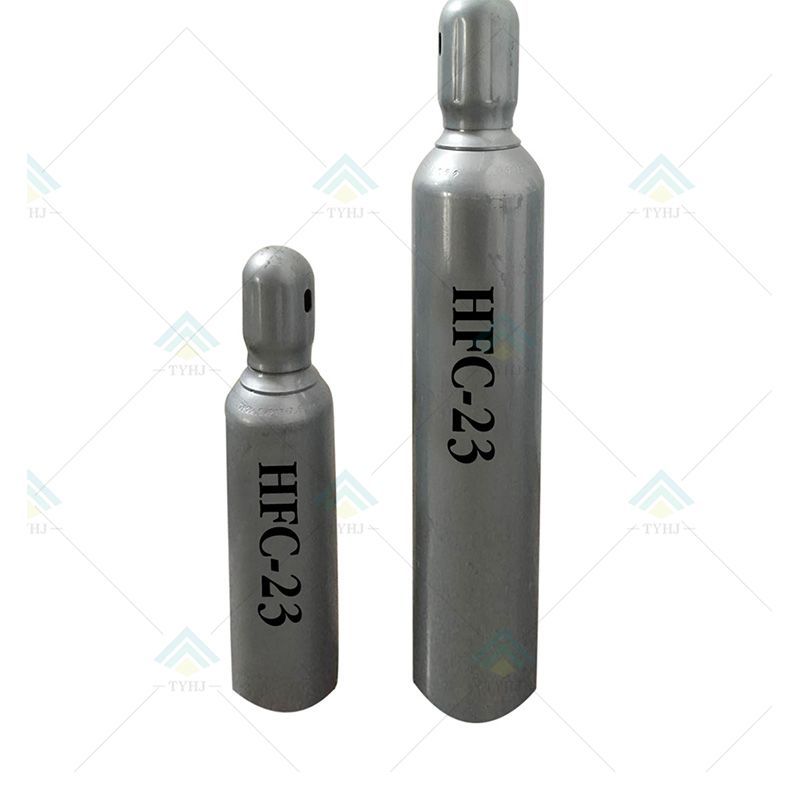Top 10 Must-Know Facts About Trifluoromethane Refrigerant Gas
When it comes to refrigerants, trifluoromethane (CHF₃)—also known as R-23 refrigerant gas—is a name that often surfaces in industrial and commercial applications. Despite its relatively niche use, this gas plays a crucial role in ultra-low temperature refrigeration systems and semiconductor manufacturing. If you’ve ever wondered what makes trifluoromethane so special—or potentially controversial—you’re in the right place.
Let’s dive into the top 10 must-know facts about trifluoromethane refrigerant gas and discover why it matters in today’s world of advanced cooling technologies.
1. What Exactly Is Trifluoromethane?
Trifluoromethane is a colorless, odorless, and non-flammable gas with the chemical formula CHF₃. It belongs to the family of hydrofluorocarbons (HFCs), which are synthetic compounds used as refrigerants in systems that require low to ultra-low temperatures.
R-23 is the refrigerant name for trifluoromethane under the ASHRAE classification. It's commonly used in cryogenic systems, environmental chambers, and semiconductor etching processes.

2. R-23 Is a Go-To for Ultra-Low Temperature Applications
Most refrigerants can only go so far in terms of how cold they can get. R-23 is capable of reaching temperatures as low as -80C (-112F), making it a critical component in two-stage or cascade refrigeration systems.
It’s often used in:
Pharmaceutical labs
Biological sample storage
Environmental testing chambers
Scientific research requiring ultra-low temperatures
3. It’s Not Flammable—But That Doesn’t Mean It’s Harmless
While trifluoromethane is non-flammable, it doesn’t mean it's entirely safe. In high concentrations, it can displace oxygen and cause asphyxiation in enclosed spaces. Also, it can decompose under high temperatures to produce toxic by-products like hydrogen fluoride (HF) and carbon monoxide (CO).
Always handle it with proper ventilation and protective gear.
4. R-23 Has a High Global Warming Potential (GWP)
Here’s the catch: R-23 has a very high GWP—approximately 14,800 times more than CO₂ over a 100-year period. This makes it one of the most climate-damaging HFCs in use today.
Because of this, regulatory bodies across the globe, especially in Europe and North America, are pushing for phase-downs or bans on high-GWP refrigerants like R-23.
5. It’s Being Phased Out in Many Regions
Due to environmental concerns, R-23 is on the regulatory chopping block. For example:
The European Union’s F-Gas Regulation aims to drastically reduce HFC use by 2030.
In the U.S., states like California are imposing limits on the sale and use of high-GWP refrigerants.
This shift is encouraging industries to look for low-GWP alternatives or recycling and reclaiming existing R-23 stocks.
6. Recycling and Reclaiming Is Now a Big Deal
Because new production of R-23 is restricted, there's a growing market for recycled or reclaimed refrigerant gas. Companies now offer services that recover, purify, and resell R-23, which helps meet demand while staying within regulatory limits.
Reclaiming refrigerant also supports circular economy practices, reducing the need for virgin chemical production.
7. It Plays a Key Role in Semiconductor Manufacturing
Besides refrigeration, trifluoromethane is widely used in plasma etching for semiconductor and microelectronics fabrication. In this process, it helps etch fine patterns onto silicon wafers, which are the foundation of electronic chips.
The demand for CHF₃ in tech-heavy sectors like telecommunications, computing, and automotive electronics ensures that it continues to have an industrial footprint—even as regulations tighten.
8. Storage and Handling Require Special Equipment
Due to its cryogenic properties and environmental risks, R-23 must be stored in high-pressure gas cylinders compliant with international safety standards. Facilities using trifluoromethane need:
Gas detectors for leak monitoring
Adequate ventilation systems
Emergency response plans
Proper employee training and PPE (Personal Protective Equipment)
Mishandling this gas not only risks health and safety but can also lead to hefty fines and environmental liabilities.
9. Alternatives Are Emerging—But Tradeoffs Exist
In the quest to replace R-23, several alternative refrigerants are being explored, including:
R-170 (Ethane)
R-744 (CO₂)
R-1150 (Ethylene)
However, these replacements often come with tradeoffs in system redesign, flammability, or performance limitations. For now, no single alternative perfectly replicates R-23’s ultra-low temperature capabilities without drawbacks.
Thus, industries must balance environmental impact, performance, and cost when making the switch.
10. Regulations Are Changing the Market Landscape
With more stringent environmental policies coming into effect, companies that rely on trifluoromethane are being pushed to innovate. These include:
Adopting new refrigeration technologies
Investing in refrigerant recovery systems
Developing hybrid cooling systems that reduce dependency on high-GWP substances
For businesses, staying ahead of these regulations is not just about compliance—it’s a strategic advantage in a sustainability-focused world.
Conclusion: Trifluoromethane’s Role Is Evolving—And Fast
Trifluoromethane refrigerant gas (R-23) has served a valuable role in ultra-low temperature refrigeration and semiconductor manufacturing. However, its high global warming potential and increasing regulatory pressure are reshaping its future.
Whether you're a facility manager, an HVAC professional, or a sustainability strategist, understanding these top 10 facts can help you navigate the changing refrigerant landscape with more clarity and foresight.


